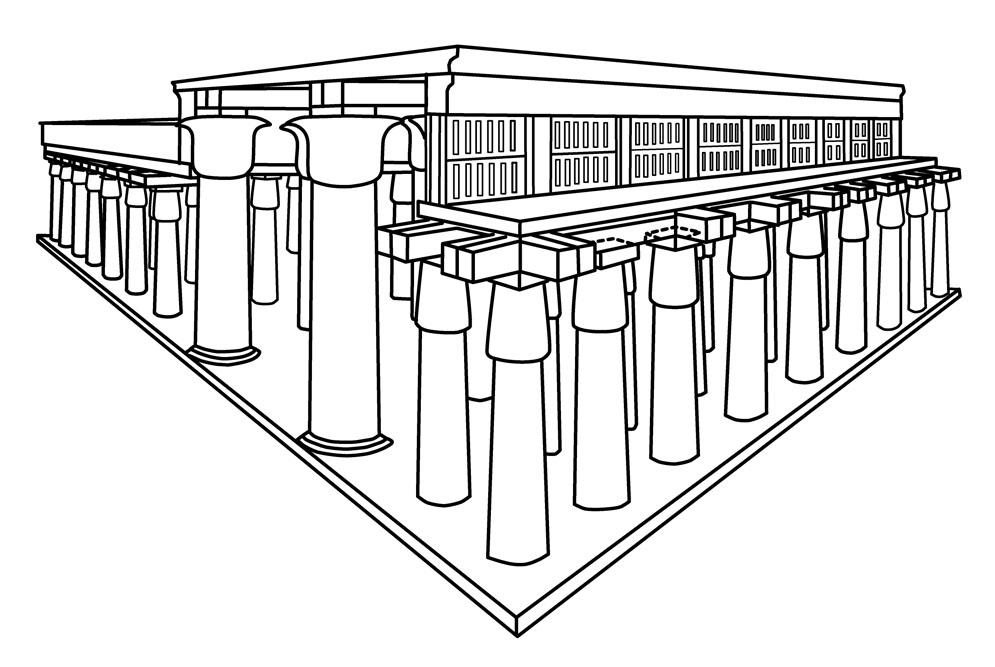Hypostyle Halls
Most Ancient Egyptian temples possessed a hypostyle hall. Hypostyle is an Ancient
Greek term denoting a building having rows of columns supporting its roof. As befitting
a "divine mansion," Egyptian temples were imposing structures often built of stone
on a large scale. Some even had two or more hypostyles. Rather than one or two modest
wooden pillars, temple hypostyles usually boasted at least four stone columns. Usually,
temple columns mimicked the appearance of papyrus reed stalks, their capitals resembling
either closed floral buds or massive bell-shaped papyrus flowers in full bloom. Larger
hypostyles might be populated with a dozen or more columns.
Columns along the central axis were built taller than the rest to support a higher
roof in the central nave. The difference between the height of the nave and the side
aisles resulted in a design similar to ancient Roman basilicas and medieval Gothic
cathedrals and, like these structures, allowed their builders to insert windows in
an attic space called a clerestory.

| Diagram showing the layout of the Hypostyle Hall, with its columns, architraves and clerestory. |

